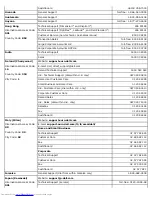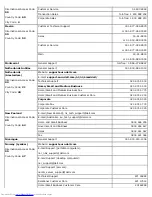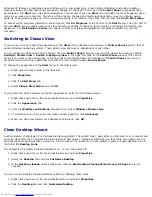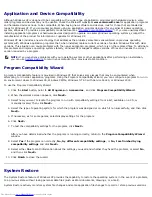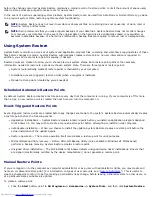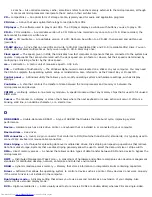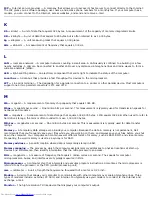
3. Click
Clean Desktop Now
.
4. When the
Desktop Cleanup Wizard
welcome screen appears, click
Next>
.
5. In the
Shortcuts
list, deselect any shortcuts you want to leave on the desktop, and then click
Next>
.
6. Click
Finish
to remove the shortcuts and close the wizard.
The shortcuts are moved to the folder
C:\Desktop Icons
.
To access desktop icons removed by Windows XP, click the
Start
button, and then click
Dell Solution Center
.
Taskbar Grouping
The Windows taskbar is a row of buttons that typically displays across the bottom of the screen. The taskbar includes the
Start
menu button and a button for each open application. (The taskbar also includes the Quick Launch icons and the
notification area.) Windows XP groups multiple instances of the same application on the taskbar. For example, if six instances
of Internet Explorer are open, each displaying a button on the taskbar, Windows XP groups the buttons next to one another
on the taskbar. If space becomes an issue on the taskbar, Windows XP consolidates all the Internet Explorer buttons into a
single button. When clicked, that button expands to a menu of the six Internet Explorer active sessions.
Notification Area Cleanup
Over time, software icons tend to proliferate in the notification area, the area in the bottom right corner of the Windows
desktop. Windows XP detects when icons in the notification area are not being accessed and hides them. A caret, or chevron,
button indicates that there are hidden icons that can be viewed by selecting the button. You can also configure the notification
area manually by right-clicking the taskbar, selecting
Properties
, and then clicking
Customize...
in the
Taskbar and Start
Menu Properties
window. For example, you may choose to hide the antivirus program icon because it is rarely accessed, but
display the audio volume icon because it is used frequently. The notification area cleanup feature is automatically enabled
when the operating system is installed, but you may disable it by unchecking
Hide inactive icons
in the
Taskbar and Start
Menu Properties
window.
Files and Settings Transfer Wizard
The Files and Settings Transfer Wizard is used to migrate personal files and settings from one computer to another (for
instance, when upgrading to a new computer). Personal files include the documents, images, spreadsheets, presentations,
and e-mail messages on your computer. User settings include display properties, window sizes, toolbar settings, dial-up
connections, Internet bookmarks, and so forth on your computer. The Files and Settings Transfer Wizard is run on a source
(old) computer to collect the data and is run again on the destination (new) computer to import the data. If the old computer
is using an earlier operating system, the wizard can be launched either from the Windows XP CD or from a diskette created
on the new Windows XP computer. You transfer the data to the new computer over a network or direct serial connection, or
store it on a removable medium such as a floppy disk, Zip disk, or writable CD.
To use the Files and Settings Transfer Wizard:
1. On the new Windows XP computer, click the
Start
button, point to
All Programs—> Accessories—> System Tools
,
and click
Files and Settings Transfer Wizard
.
2. On the
Files and Settings Transfer Wizard
welcome screen, click
Next>
.
3. On the
Which computer is this?
screen, select
New Computer
, and then click
Next>
.
4. The
Do you have a Windows XP CD?
screen appears.
The Files and Settings Transfer Wizard guides you through the steps necessary to transfer user settings, personal files, or
both to the new computer. If a CD drive is not available, the wizard allows you to create a wizard diskette to run on your old
computer.
NOTE:
The time required to collect and transfer data depends on the amount of data collected. Times can vary from
just a few minutes to several hours.
Summary of Contents for GX260 - Optiplex Pentium 4 2.0GHz 512MB 40GB CD
Page 6: ......
Page 29: ......
Page 37: ...Back to Contents Page ...
Page 40: ...information on resetting the chassis intrusion detector Back to Contents Page ...
Page 73: ......
Page 76: ......
Page 86: ...2 padlock ring 3 two release buttons one on each side Back to Contents Page ...
Page 111: ......
Page 128: ...1 release buttons 2 security cable slot 3 padlock ring Back to Contents Page ...
Page 155: ...Back to Contents Page ...
Page 186: ...Back to Contents Page ...
Page 210: ...Back to Contents Page ...
Page 232: ...BSMI Notice Taiwan Only ...






